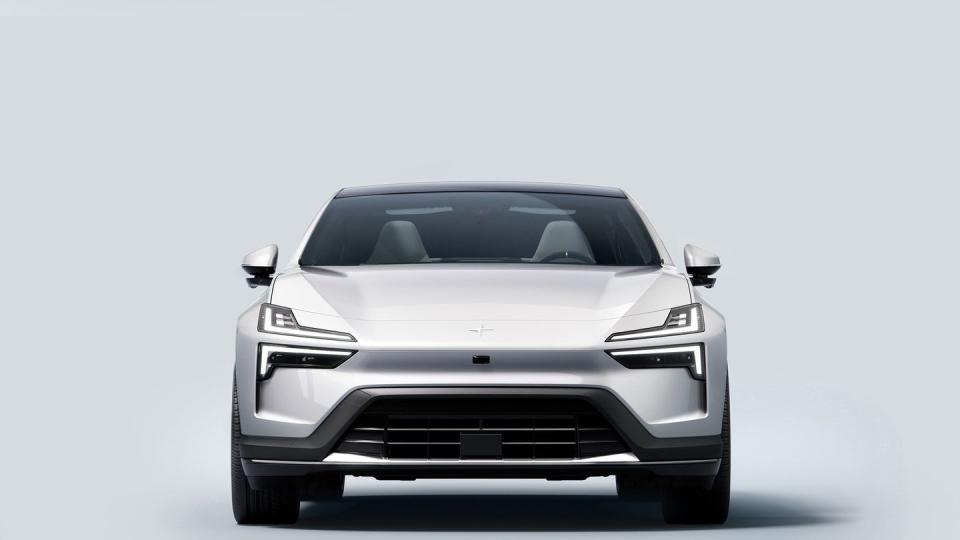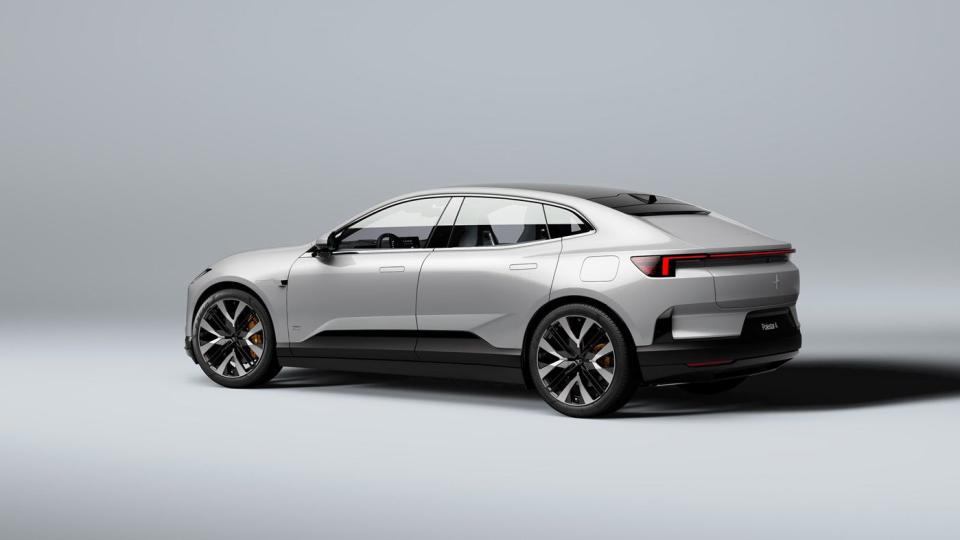Polestar 4 Will Offer Mobileye’s Eyes-Off-the-Road Chauffeur System

Polestar plans to offer Mobileye's Chauffeur system in the Polestar 4, promising a mix of SAE Level 2 and Level 3 capabilities.
Mobileye's Chauffeur system will use cameras, LiDAR, and radar to offer eyes-off driving on highways, and eyes-on driving on other types of roads.
The Polestar 4 is currently on sale in China, and will arrive on sale stateside in 2024.
Volvo's sibling brand has made no secret of its plans for higher-level ADAS features in its cars. And its latest collaboration with Mobileye will bring the autonomous tech developer's new Chauffeur system to the Polestar 4 in the near future.
What does Chauffeur promise?
The Polestar 4 already features Mobileye's SuperVision-based ADAS system, featuring 11 cameras and radar to permit autonomous lane changes, adaptive cruise control, highway and traffic jam assist, and a number of other capabilities.
Building on this system but adding LiDAR, Mobileye's Chauffeur will offer what the company calls "eyes-off, point-to-point autonomous driving on highways," while offering eyes-on driving on other types of road and in other settings.

"Chauffeur upgrades SuperVision with the newest EyeQ6 system-on-chip along with next-generation active radar and lidar sensors, providing the additional sensing layer needed for eyes-off autonomous operation—demonstrating how existing eyes-on systems build a bridge to fully autonomous driving," Mobileye notes.
If this sounds like a mix of an SAE Level 2 and Level 3 systems, that's exactly where the industry is headed at the moment when it comes to operational roll-outs of ADAS systems.
Eyes off—and on—the road
On highways, these systems seek to offer driving without the need to keep your eyes on the road, known in the industry as SAE Level 3, while more complex environments will require drivers to monitor the car's behavior in traffic at all times, as in existing Level 2 systems such as Tesla's Autopilot.
It's a curious compromise, offering a gradual evolution of automated driving abilities. And it is increasingly where automakers and developers will try to take their capabilities, at least in those vehicles using a combination of cameras, LiDAR, and radar.
But Polestar isn't saying just when the Polestar 4 and other Polestar models will begin receiving Chauffeur.
As usual, some global markets (that aren't composed of 50 different jurisdictions, each with their own ADAS and autonomous driving regulations) are far more open to Level 3 systems, and could receive this system before others.
50-state problem
More US states could also opt to allow Level 3 systems in the near future, though lacking a uniform approach will obviously complicate things for automakers and consumers, as it does today when it comes to Level 3 systems.
European automakers have generally held off on making concrete promises to US consumers regarding such systems, so a lot of what's being said in the autonomous industry today is hedged against regulatory realities, some of which could be quite opposed to eyes-off, hands-off systems.
Automakers, meanwhile, are in competition to offer owners the ability to multitask while behind the wheel.
"A collaboration with Mobileye can significantly push innovation in our Polestar 4 electric performance SUV coupé," said Thomas Ingenlath, Polestar CEO. "We know that driving yourself is not always fun and exciting—this technology means our customers could enable autonomous driving when they want, making all future journeys enjoyable."
Speaking of the Polestar 4, the electric crossover has just gone on sale in China, offering up to 544 hp and 348 miles of range. But we won't receive it until 2024.
It remains to be seen just when and where Polestar will be able to offer Level 3 systems in the US.
Will car buyers rush to pay more for Level 3 systems that will allow eyes-off autonomous driving on freeways early on, or will demand for such systems be slow to gain momentum as technology rapidly improves? Let us know what you think in the comments below.

 Yahoo Autos
Yahoo Autos 